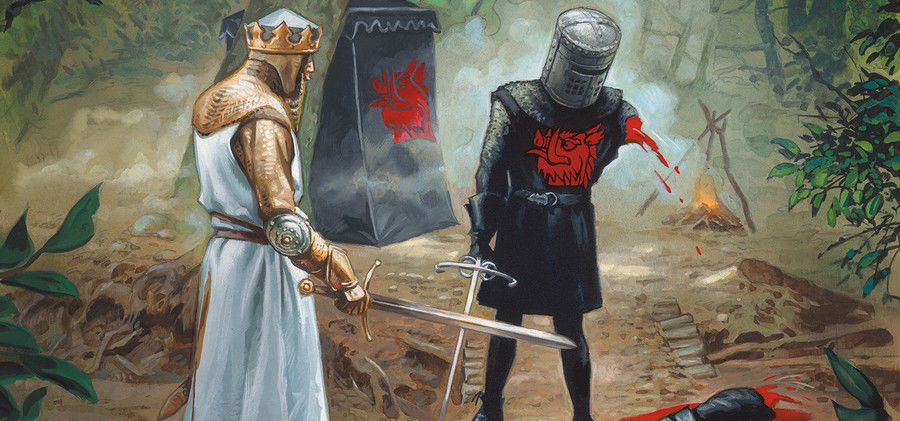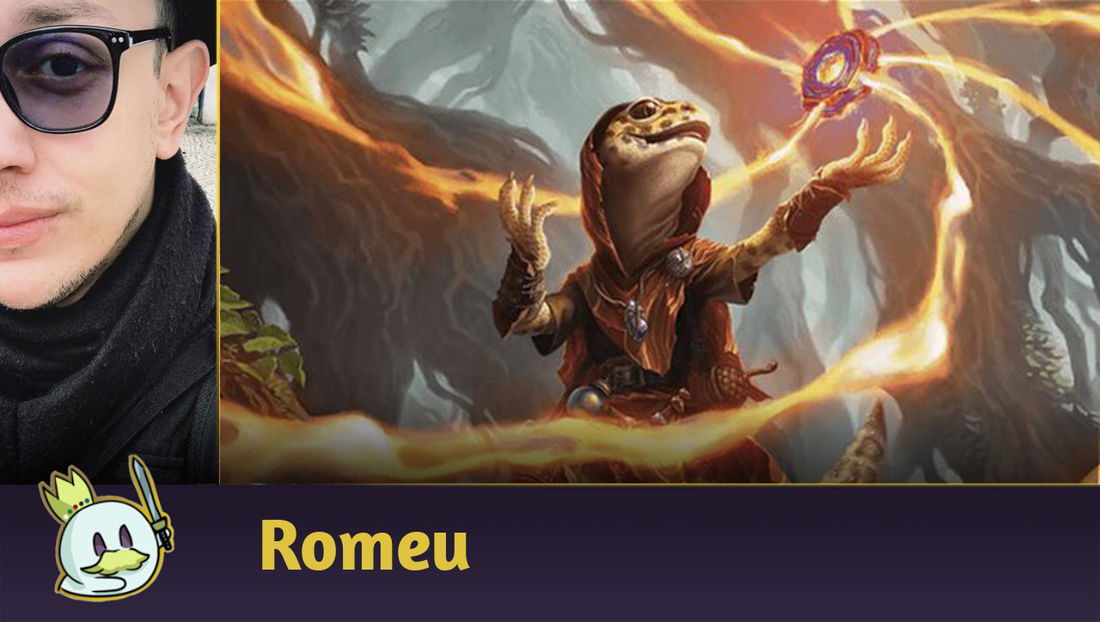What is a Cantrip in MTG?
Cantrip is the name given to spells, normally costing one mana, that have some effect where they are replaced in their controller's hand. They can come in the form of mana correction, protection, pump, or a way to filter the top of your deck while drawing a card.

Ideally, cantrips need to be cheap and/or their replacement effect needs to be commensurate with their cost. For example, Opt only looks at one card from the top of your deck for 


Why are Cantrips so important?
Cantrips represent one of the main deckbuilding pillars in Magic, especially in blue decks.
For example, it was through their combination that Alan Comer created the Turbo Xerox - a deck building pattern where, due to the efficiency of cantrips in searching for cards, we can reduce the number of lands if we replace them with cheap spells, ideally those that dig deeper searching for the lands we need at the beginning of the game while, on the other hand, we will have fewer “dead cards” on our top as the game goes on.
These spells are also essential for finding specific pieces. Digging deeper into the deck to find a combo and/or an answer is just as important as presenting a threat on the board every turn, and the additional draw can define the end of a game or the possibility of a player managing to return to the game with something from the top and/or found through the various interactions between these spells - placing them in a space where, in terms of finding pieces, they are second only to Tutors.
Not every deck will run cantrips and not every list needs them. Furthermore, it is important to know how many of them are actually needed in your list to avoid spending too many resources casting them and running out of mana to play the cards that the player sought - the more cantrips, the more “seeking” spells we have, and because aren't as consistent as tutors, the more difficult it becomes to find the answers we want without having to play two or more of them in a single turn.
What is the ideal number of Cantrips for an MTG deck?
The ideal number of Cantrips varies depending on each list. As a general rule, the number of them is defined by your game plan and access to existing tutors for your strategy.
For example, Control decks usually have between 4 and 8 cantrips, but may want more depending on how deep they dig and what sources of draw and card advantage the format has for its list. Tempo decks tend to use between 10 and 16 cantrips, also depending on how many answers the archetype has and what other sources of card advantage are available.
Finally, combo variants can use up to 20 cantrips to get the pieces they require, especially if they are based on spells, like Storm, or if they need a very specific card and/or combination to work.
The 10 Best Cantrips in MTG
10 - Ancient Stirrings

Ancient Stirrings can be the best or worst cantrip a player can want, depending on the number of colorless cards in their list: in decks that only use a few colorless cards, they have a much greater chance of just fetching a land, while strategies that have many artifacts and/or require a specific colorless piece can benefit absurdly from its use.
Strategies like Tron and the old Krark-Clan Ironworks combo have turned Ancient Stirrings into a staple and the card has already been debated for possible ban due to the high amount of redundancy it offers when digging deeper than most other cards - and with the return of Eldrazi decks with Modern Horizons 3, this green spell may once again have a significant impact in Metagame.
9 - Dress Down

Dress Down is one of the most important answers in the eternal formats against a dozen troublesome situations while it replaces itself on the controller's hand, in addition to having several micro-interactions with the timing in which it is cast and even create "combos" with it.
From ETBs like Primeval Titan and Evokers to combo pieces, tokens from Urza's Saga and Simulacrum Synthesizer and even being used proactively with Phyrexian Dreadnought or Death's Shadow, the ability to remove abilities from creatures for one turn makes Dress Down is a super efficient card where the draw offered by it is just the icing on the cake.
8 - Consider

Consider is basically the “child” of two cantrips that have already been widely played in several competitive formats: Opt and Thought Scour, where it offers the inherent quality of both without creating negative trade-offs in the process - unless its controller really wants to cast Murktide Regent or Gurmag Angler early.
For one mana and as an Instant, its power level is extremely balanced, as it helps filter the top while permanently dealing with useless cards without having predictability or the need for other interactions, putting it one step ahead of many cantrips launched in recent years and even some recent reprints, such as Sleight of Hand.
7 - Veil of Summer

Veil of Summer was once considered so broken to the point of being banned from Standard and Pioneer for replacing itself in its owner's hand while protecting spells and combos, and while its draw is conditional, most of the occasions in which the card is present are in matchups where we hope to make the most out of it.
Unlike other protections, Veil of Summer is so efficient at what it does and generates such positive value for its controller that it has even become a maindeck staple in some Legacy or Modern lists depending on the Metagame, making it the ultimate security for combo archetypes and other strategies that want to protect their key pieces.
6 - Mishra’s Bauble

Mishra’s Bauble took over a decade to make an impact on eternal formats, but once it did, it never left the competitive scene.
Appearing first in Death's Shadow lists with Traverse the Ulvenwald, the artifact stood out as a zero-mana cantrip that enabled Delirium and grew Tarmogoyf, but over the years, several other archetypes began to include the artifact for various purposes: returning it to the board with Emry, Lurker of the Loch or Lurrus of the Dream-Den, enabling Delirium for Dragon's Rage Channeler or, in pre-MH1 versions, use it to speed up a Gurmag Angler on the second turn.
Although it is part of the long cycle of cards from the Ice Age block known as “delayed cantrips”, the fact that it is a zero-mana spell that interacts with so many strategies puts it in a critical position in Modern and Legacy.
5 - Preordain

Previously banned in Modern and a staple of Pauper and Legacy, Preordain has solidified itself as one of the strongest cantrips ever released in the game due to the change in the order of its effects compared to Serum Visions, its mechanical predecessor.
The possibility of filtering the top before drawing the card means that the player can “dig” up to three cards with Preordain, helping to find the answers and/or the threat needed to finish the game. Furthermore, by digging deeper, it is common for turbo xerox decks to reduce more lands in the presence of Preordain in their lists, as it adds much more consistency than other options available in Modern.
4 - Gitaxian Probe

Peek is far from being one of the best cantrips in the game, but when we reduce its mana value to the point where we can cast it for free, it becomes so strong that it had to be banned from almost all eternal formats.
Gitaxian Probe offers one of the most important features of a game in Magic: The Gathering - information. With it, we can know which threat to play, whether we have a clear path to perform a combo and/or which pieces we need to find to play around the opponent's answers and threats: all of this for free, with the mere cost of two life that can, if necessary, also be paid with 
This versatility and ease of providing information made Gitaxian Probe too strong in Modern and, later, its interactions also became too oppressive in Legacy and, finally, in Pauper, where it was one of the three free spells banned from the format.
3 - Arcum’s Astrolabe

Even more broken than its predecessor, Arcum’s Astrolabe is one of those cards that seems barely relevant during the spoiler season, but in practice, it changed the way eternal formats played.
The ease of access to mana of any color, color correction and draw for just one mana put several multicolored stacks in the game through the interaction of this artifact with Prismatic Vista and snow lands, allowing Goodstuff to play around Blood Moon, Wasteland and other common hates that aim to put these strategies in check.
In the end, Arcum's Astrolabe became so impactful that it was banned from Pauper, Modern and Legacy respectively, and proved that a Prophetic Prism can, under the right conditions, have the potential to take over high-powered formats.
2 - Ponder

In a vacuum and on its own, Ponder might be considered the best cantrip of all time: it digs as deep as Preordain and manages to get rid of several useless cards at once - however, it also has flaws such as in situations where we have a good card at the top along with two other bad draws in the following turns, forcing us to choose between keeping the good card, or shuffling the three searching for a better sequence.
Ponder is banned in Modern and must remain that way to keep certain Tempo and Combo lists in check, while it is one of the most important cantrips in Legacy and naturally appears frequently in Pauper - despite Preordain and the card in our first place being more important in the Metagame of this format.
1 - Brainstorm

Brainstorm has been a staple in Legacy since the format's birth and reproduced the same results in Pauper, and much of it is due to the high number of interactions that exist with this spell.
As an Instant, Brainstorm allows you to protect yourself from discards like Thoughtseize, Grief or Hymn to Tourach by putting your most important pieces on top, getting rid of bad cards in the interaction with Fetch Lands or effects that shuffle the deck, such as Ponder, Lorien Revealed or Ash Barrens, and even in formats without Fetch Lands, such as Historic, this spell has proven strong enough to the point of needing to be banned merely because it generated too much value as a card selection.
Today, the card remains so influential that it places Orcish Bowmasters as the most important creature in Legacy for forcing players to think twice before casting Brainstorm, and even with this targeted hate, it remains as the most played cantrip in the format and one of the cards that, naturally, makes up one of the format's pillars.
Conclusion
That's all for today!
If you have any questions or suggestions, feel free to leave a comment!
Thanks for reading!













— Comments 0
, Reactions 1
Be the first to comment